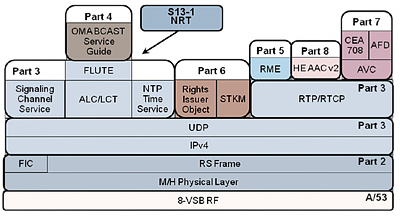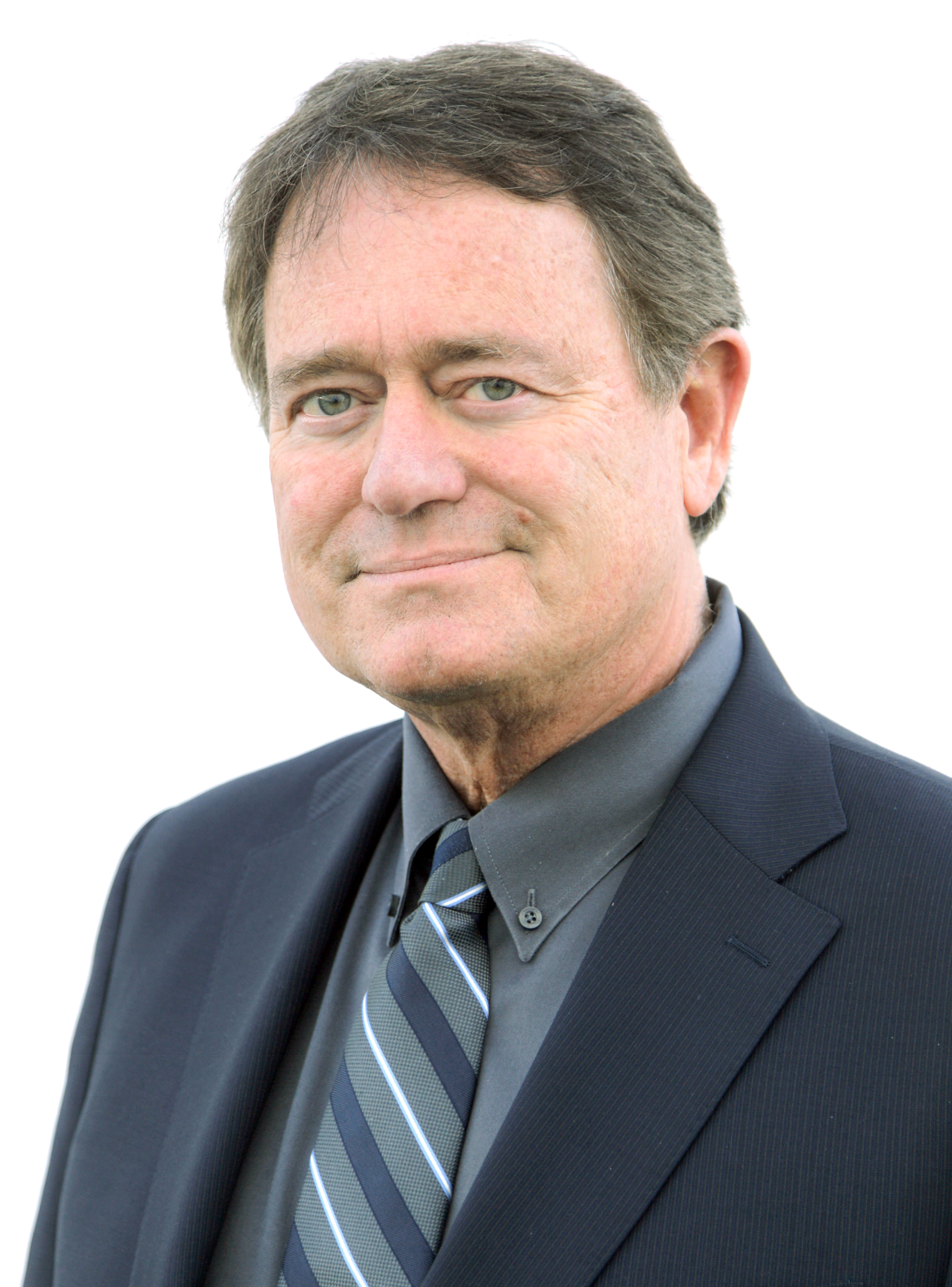A 'Flexible Framework'
The work to develop a comprehensive standard for mobile and handheld services—known as "ATSC Mobile DTV"—has reached a milestone with publication of the A/153 Candidate Standard document set. ATSC Mobile DTV is built around a highly robust transmission system based on vestigial sideband (VSB) modulation coupled with a flexible and extensible Internet Protocol (IP) based transport system, efficient MPEG AVC (ISO/IEC 14496-10 or ITU H.264) video, and HE AAC v2 audio (ISO/IEC 14496-3) coding. The ATSC Mobile DTV Candidate Standard describes the methodology for new services to be carried in digital broadcast channels along with current DTV services without any adverse impact on legacy receiving equipment.
In addition to live television, the ATSC Mobile DTV system provides a flexible application framework to enable new receiver capabilities. Receivers that make use of an optional Internet connection will enable new interactive television services, ranging from simple audience voting to the integration of Internet-based applications and transactions with television content.
The major elements of the ATSC Mobile DTV system have been selected and documented. On Nov. 25, the Technology and Standards Group (TSG) approved publication as a Candidate Standard.
The Open Mobile Video Coalition (OMVC) has announced plans to conduct field trials of the ATSC Mobile DTV system and the Consumer Electronics Association has launched a complimentary special interest group for manufacturers interested in building products to the Candidate Standard.
DOCUMENTATION
In a tip of the hat to the core ATSC DTV Standard—document A/53—the final ATSC Mobile DTV standard will be known as A/153. Like A/53, A/153 is modular in concept, with the specifications for each of the modules contained separate Parts. (See Fig. 1.) The individual Parts of A/153 are as follows:
Part 1—"Mobile/Handheld Digital Television System" describes the overall ATSC Mobile DTV system and explains the organization of the standard. It also describes the explicit signaling requirements that are implemented by data structures throughout the other Parts.

Fig. 1: The overall A/153 documentation structure.Part 2—"RF/Transmission System Characteristics" describes how the data is processed and placed into the VSB frame. Major elements include the Reed-Solomon (RS) Frame, a Transmission Parameter Channel (TPC), and a Fast Information Channel (FIC).
Part 3—"Service Multiplex and Transport Subsystem Characteristics" covers the service multiplex and transport subsystem, which comprises several layers in the stack. Major elements include Internet Protocol (v4), UniDirectional Protocol (UDP), Signaling Channel Service, FLUTE over Asynchronous Layered Coding (ALC) / Layered Coding Transport (LCT), Network Time Protocol (NTP) time service, and Real Time Protocol (RTP) / Real Time Transport Control Protocol (RTCP).
Part 4—"Announcement" covers Announcement, where services can optionally be announced using a Service Guide. The guide specified in Part 4 is based on an Open Mobile Alliance (OMA) broadcast (BCAST) Service Guide, with constraints and extensions.
Part 5—"Application Framework" defines the Application Framework, which enables the broadcaster of the audio-visual service to author and insert supplemental content to define and control various additional elements of the Rich Media Environment.
Part 6—"Service Protection" covers service protection, which refers to the protection of content, either files or streams, during delivery to a receiver. Major elements include the Right Issue Object and Short-Term Key Message (STKM).
Part 7—"Video System Characteristics" defines the AVC and SVC Video System in the ATSC Mobile DTV system. Additional elements covered in this Part included closed captioning (CEA 708) and Active Format Description (AFD).
Part 8—"Audio System Characteristics" defines the HE-AAC v2 Audio System in the ATSC Mobile DTV system.
An additional Part focusing on content protection is planned for later release.
While the basic capability for sending files is defined in Part 3, it is very general and broad. A constrained set of interoperability points are being defined in a separate ATSC activity (in TSG S/13, the Specialist Group on Data Broadcasting) where non-real-time file delivery requirements are being documented for use in both the ATSC Mobile DTV system and the current DTV (8-VSB) system.
The ATSC Mobile DTV Candidate Standard document set can be downloaded from the Candidate Standard page on the ATSC Web site: www.atsc.org.
Jerry Whitaker is vice president of standards development for the ATSC. You can reach him via TV Technology.
The professional video industry's #1 source for news, trends and product and tech information. Sign up below.

